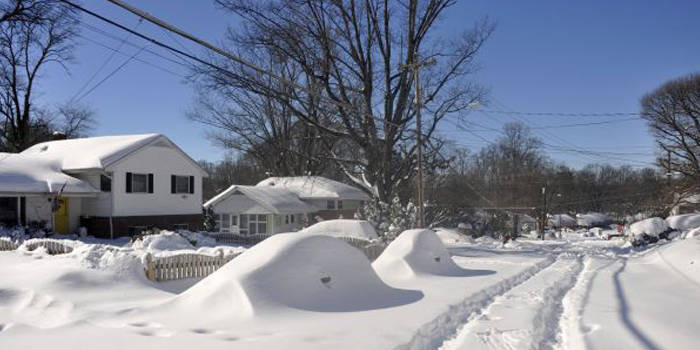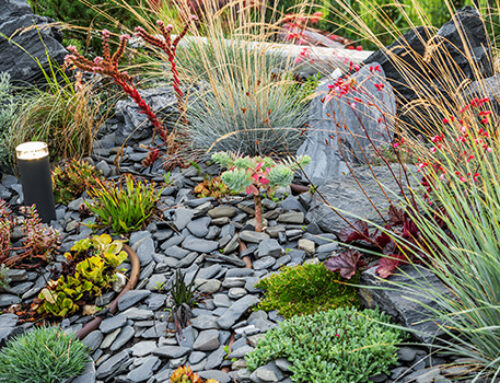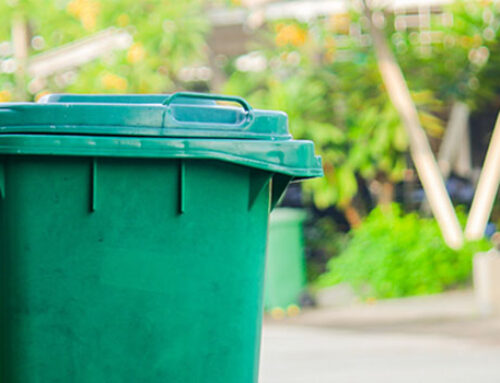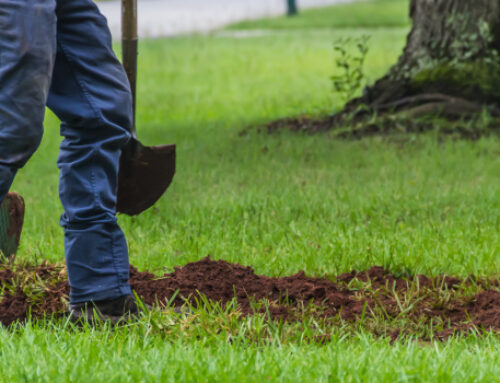Depending on where you live, you may be able to anticipate that you will experience at least one winter weather event before spring starts. Whether it is a deep freeze, blizzard, nor’easter, or thundersnow, you want to ensure that you prepare properly to keep you, your loved ones, and your home safe.
Know the Terms.
Whether you are under a Winter Storm Warning or Advisory, it’s important to know what each term means in order to properly prepare. Click here for a breakdown of what each winter weather alert means.
Prepare the Outside of Your Home.
Once you know that winter weather is on the way, start preparing the outside of your home early for potential snow and freezing temperatures.
- Cover bushes and plants to help protect them during a freeze. You can use specialty covers that are designed to shield your greenery from frost or use what you have available at home, like old sheets, blankets, towels, cardboard, or tarps.
- Disconnect water hoses. Not only should water hoses be drained of water that may be lingering in the hose, but they should be disconnected from the home as well.
- Empty flowerpots. For any flowerpots that are not in use, rather than fill them with soil, which can expand upon freezing and cause cracks to your flowerpot, store your flowerpots empty.
- Have sand/ice melt/kitty litter ready. Freezing temperatures will create hazardous walking conditions outside of your home. Have sand, ice melt, or even kitty litter on hand to sprinkle on any walkways.
- Cover and secure any loose patio furniture.
- Clean and store your barbeque grill or smoker. If you are unable to store your grill or smoker safely indoors, cover them to keep dry and safe from damage.
- Drain water features. Since water expands as it freezes, drain water from any outdoor water feature to help prevent damage.
- Cover outdoor pipes. If you have any exposed pipes on the exterior of your home, be sure to cover them to help insulate during freezing temperatures.
Prepare Your Car.
While the safest option when facing winter weather is to just stay home and avoid driving, we know that isn’t always possible. When it’s unavoidable to drive in wintry conditions, take the following precautions to stay safe.
- Keep the car’s gas tank full. In the event that you need to evacuate or drive during winter weather, ensure that you have enough gasoline to not get stranded. Prior to the winter storm reaching your neighborhood, fill up at the gas station as a final preparation step.
- Keep an emergency kit readily available. If you ever are stranded in your vehicle during winter weather, it’s important that you have adequate supplies handy to stay protected. Keep an emergency kit in your car with the following supplies:
- Extra blankets, coats, and gloves
- Food and water
- First aid kit
- Flashlight
- Flare gun
- Ice scraper
- A charged power bank for charging your phone
- Be ready to jump start. Extreme low temperatures can drain the life out of your car’s battery. To help ensure that you’re able to jump start your battery, should low temperatures leave your car without power, have jumper cables or a portable car jump starter on hand.
- Invest in winter tires. If you live in an area that sees a lot of ice and snow during the winter months, the safest choice would be to invest in good winter tires or snow chains for your vehicle.
Prepare the Interior of Home.
Whether or not you plan on waiting out the winter storm in the comfort and safety of your own home, there are important steps to take to ensure that you avoid any damage to your property.
- Stay well stocked on supplies. Since winter storms can lead make traveling dangerous, ensure that your home is well stocked.
- First aid kit
- Food and water
- Flashlights and candles
- Batteries
- Firewood
- A charged power bank for charging your phone
- Extra blankets and warm clothing
- Replace batteries in your fire alarm and carbon monoxide detector ahead of time.
- Stay safe when using portable heat sources. Ensure that portable space heaters are in good working order and are never left unattended. Keep a three-foot safety zone around your portable heater to avoid the risk of fire.
- Never use outdoor heaters indoors. Portable heaters that were built for outdoor use can produce carbon monoxide and are dangerous if used indoors.
- Avoid burst pipes. You’ve likely heard these tips before, and for good reason. To avoid the costly damage that burst pipes can produce, be sure to follow these steps:
- To keep warm air circulating around your pipes, open the cabinets under your bathroom, kitchen, and utility sinks.
- Leave faucets dripping.
- Bring your pets inside. While our four-legged friends come pre-equipped with their very own year-round fur coat, it doesn’t mean that they aren’t susceptible to Jack Frost’s touch. All animals can experience hypothermia and frostbite. Bring your pets indoors to ensure that they stay warm and protected.
During the Storm and Dealing with the Aftermath.
Winter storms bring a flurry of snow and ice, both of which can create danger when stepping out your front door.
- Sprinkle salt/ice melt/kitty litter on any icy surface where you will be walking, even if you don’t see the clear presence of ice. Black ice can be deceptive and appear as normal as a wet sidewalk.
- Bundle up before heading outdoors. Be sure to wear proper clothing: a wind-resistant coat, multiple layers, mittens or gloves, scarves, a hat, waterproof boots, etc.
- Take care when shoveling snow. Don’t let the cold temperatures and fluffy nature of snow fool you – the chore of shoveling snow is actually a good cardio workout. Be careful to not push yourself too hard and to take frequent breaks. The combination of cold temperatures and elevated heart rate has been known to cause heart attacks in some individuals.
- Be a good neighbor. Finally, be sure to check in with your neighbors. There may be individuals in your neighborhood who are either unable to prepare properly or may have a hard time dealing with the aftermath of a winter storm. By working together, you will not only help a neighbor in need, but you will be bringing your community closer together.
We hope that these tips help you and your family weather the storm. For more tips on all things HOA and HOA Management, be sure to check out our other articles!






